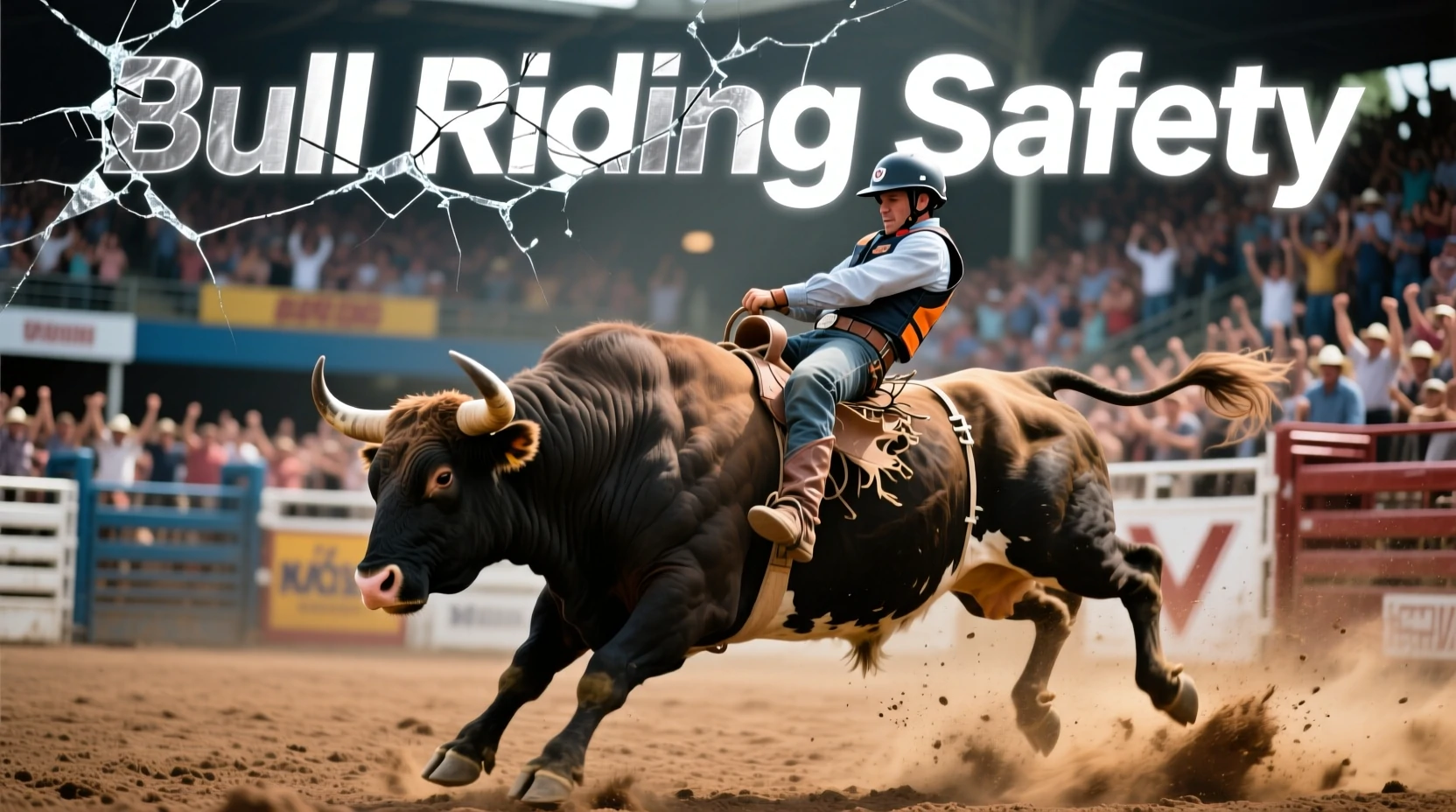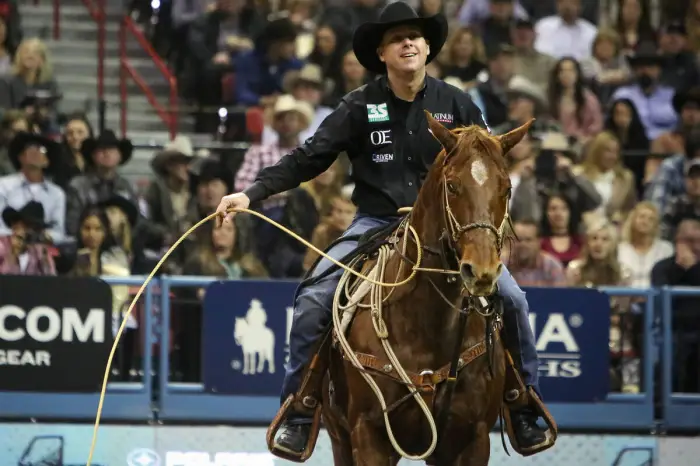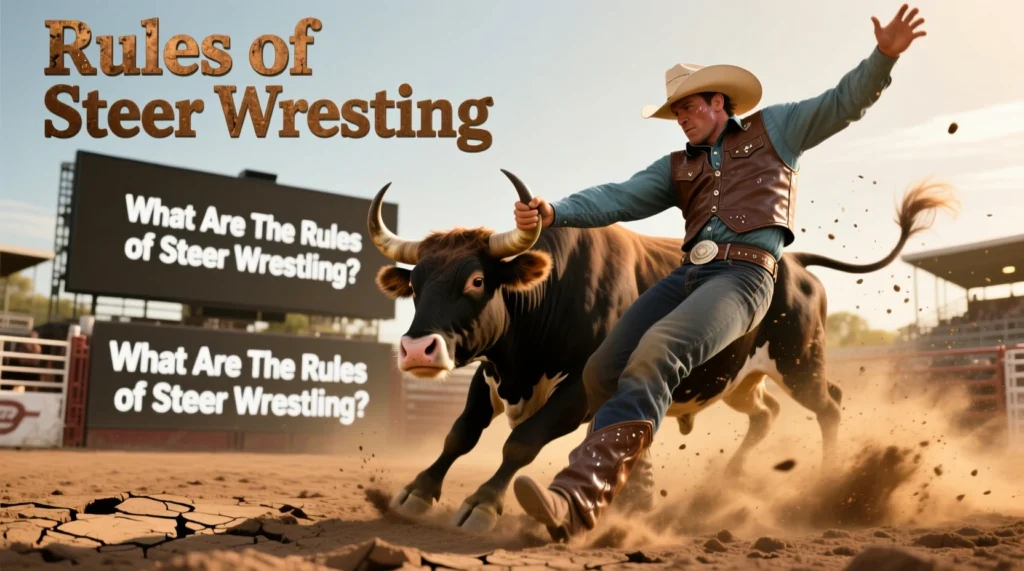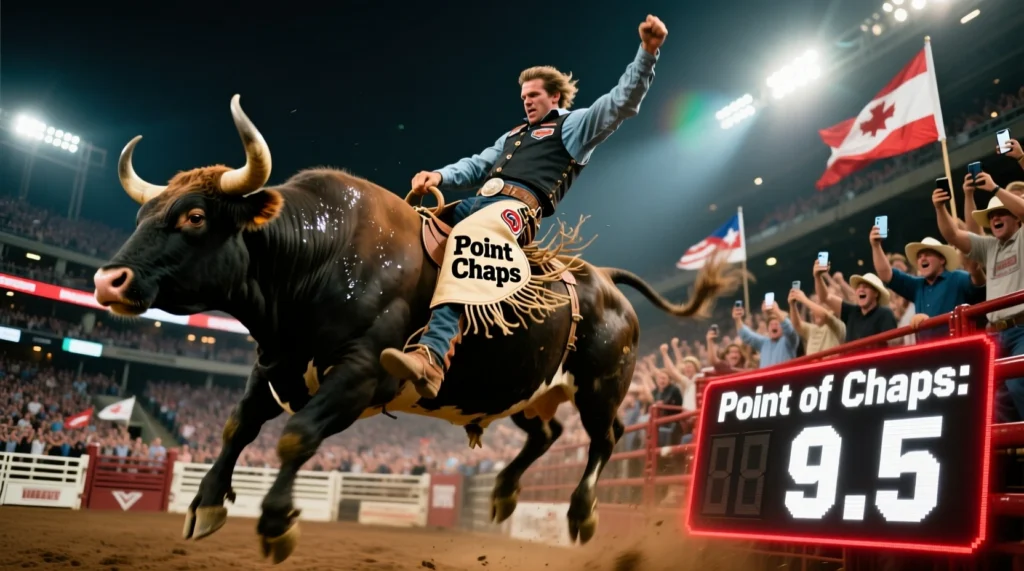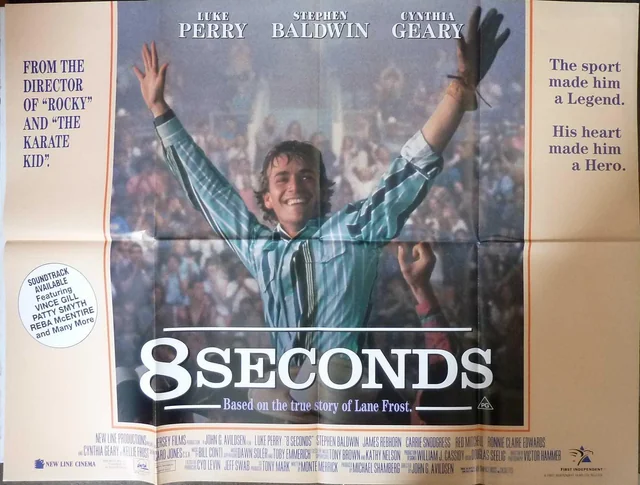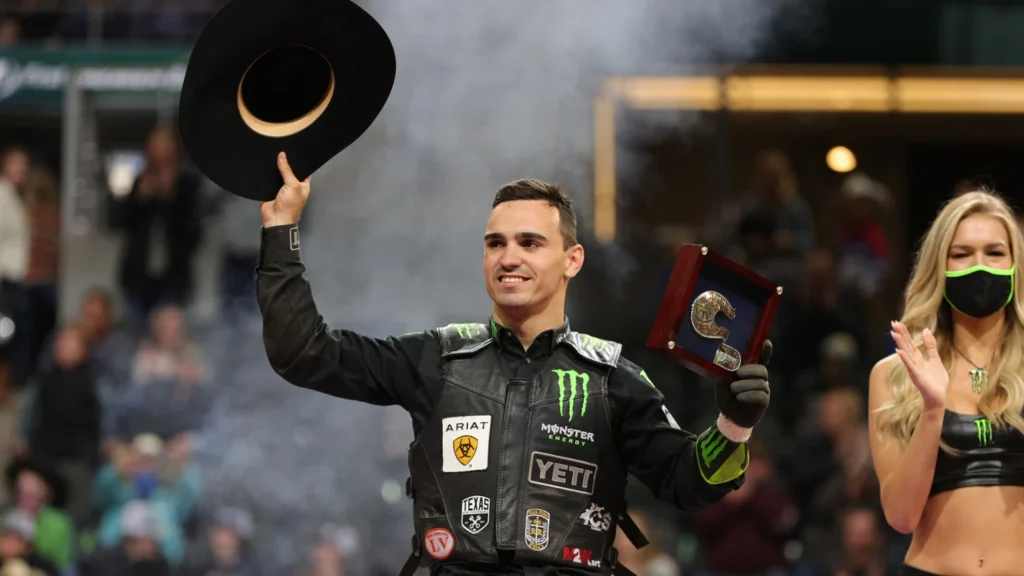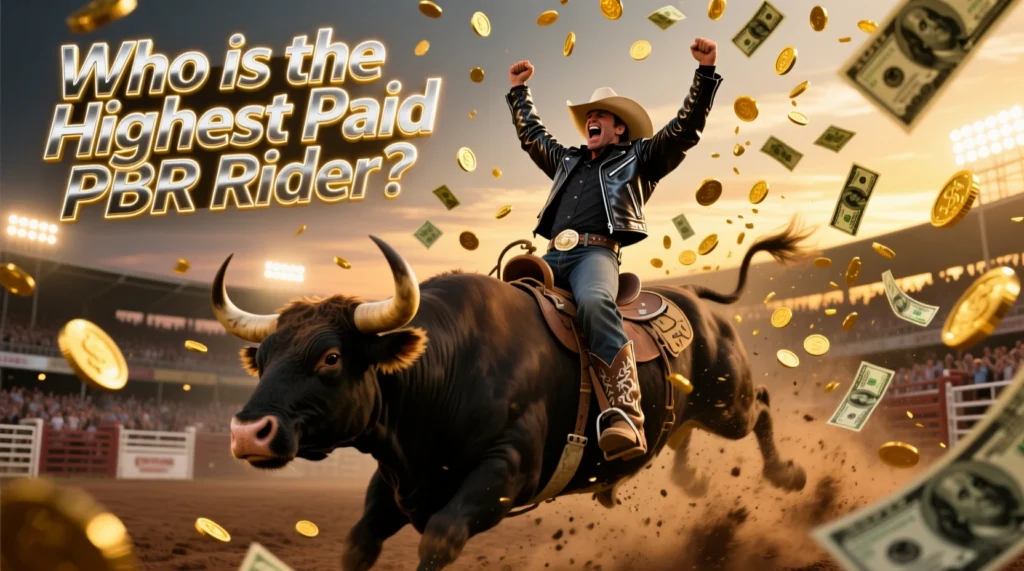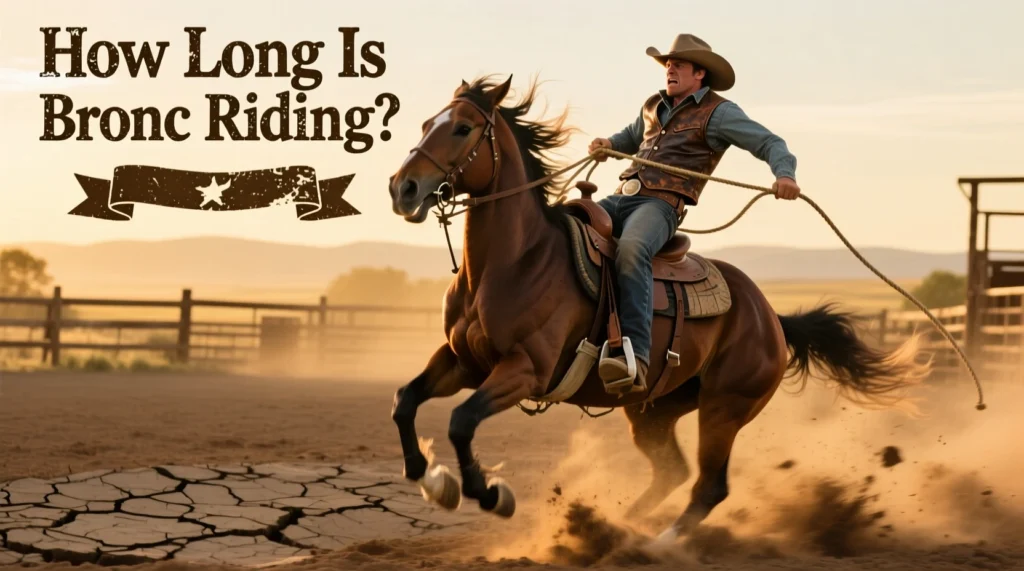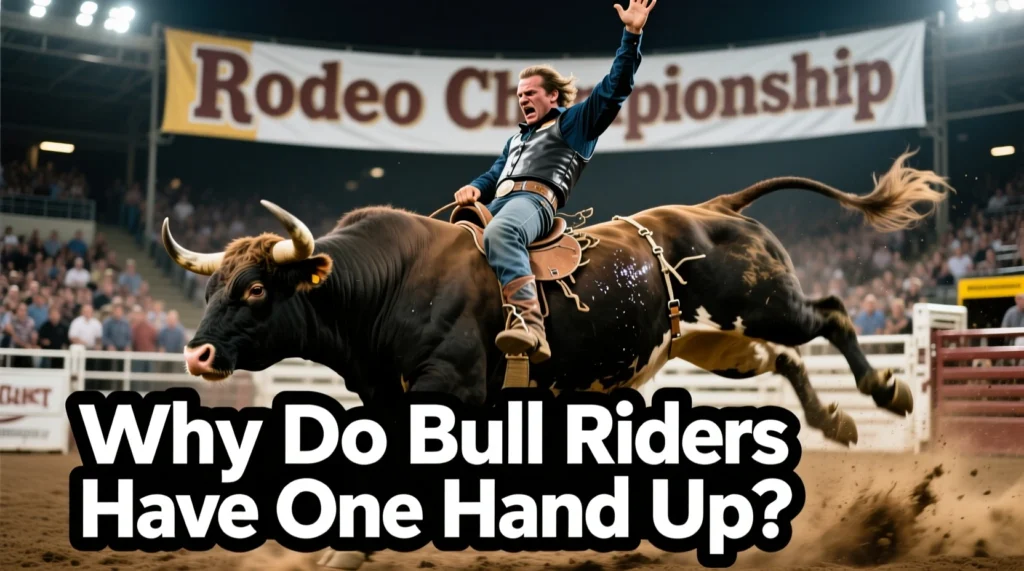Explore the delicate world of bull riding safety. Discover 2025 injury statistics, expert insights into concussion risks, and essential safety equipment that saves lives in America’s most dangerous sport.
Table of Contents
The Stark Reality of Bull Riding
Bull riding has earned its reputation as “the most dangerous eight seconds in sports.” With its unique blend of raw power, unpredictability, and athletic prowess, this extreme sport captivates millions while offering unparalleled dangers. Beneath the excitement lies a sobering reality: bull riding has the highest injury rate of any organized sport, with participants ten times more likely to be injured than professional football players. Understanding bull riding safety isn’t just about improving performance – it’s about saving lives and preventing catastrophic injuries in a sport where risk is inherent but manageable through proper precautions, equipment and training.
Bull Riding Safety Statistics: The Hard Data
Recent data from the Professional Bull Riders (PBR) Association and CDC research shows the risks riders face every time they ride a bull. The data paints a clear picture of why safety should be a top priority for every participant.
Injury Rates and Comparisons
- Bull riding injury rate: 32.2 – 48.2 injuries per 1,000 competitor exposures
- Exposure hour rate: An unprecedented 1,440 injuries per 1,000 exposure hours
- College rodeo participants: Face an 89% chance of injury each season – double the injury rate for college football players
- Severe injuries: 36% of bull riding injuries are classified as severe.
- Death rate: 1-3 riders lose their lives in the U.S. annually
Most Common Bull Riding Injuries (2024 Data)
| Injury Type | % of Accidents | Average Recovery Time | Prevention Tip |
|---|---|---|---|
| Broken Bones | 32% | 3-6 months | Wear padded vests |
| Concussions | 25% | 6+ months | Use ASTM-certified helmet |
| Spinal Injuries | 12% | 1+ year (often permanent) | Practice safe dismounts |
| Horn Punctures | 8% | 3+ months | Avoid loose clothing |
| Contusions/Bruising | 19.2-29.5% | Varies | Proper falling techniques |
The Invisible Injury: Concussions and Brain Health in Bull Riding
Understanding the Mechanism of Brain Injuries
Concussions represent one of the most serious and misunderstood hazards in bull riding. According to Nicholas Murray, an expert at the University of Nevada, “Whiplash alone can cause concussion before the bull rider hits the ground. The sudden shock to the brain from the bull’s powerful movements can impale the brain inside the skull, resulting in a concussion.” This means that riders can sustain severe head injuries without directly impacting their heads.
The Second-Impact Crisis
Murray further explains the risk of concussions: “Once a rider hits the ground, they often concuss, but by that time they may have sustained a second concussion, meaning they have suffered a second head injury before they have recovered from the first.” This compounding effect dramatically increases the risk of long-term neurological damage.
Long-Term Consequences
The long-term implications of repeated head trauma in bull riding are just beginning to be understood. “Chronic pain causes changes in the brain,” says Murray. “So, if you have a concussion and you never get over it and you have constant pain, headaches, dizziness, things like that, it’s going to cause changes in your brain. That can have very serious consequences down the road.” Bull riders are now included in the Professional Athletes Brain Health Study, which examines chronic traumatic encephalopathy (CTE) and other neurodegenerative diseases.
Essential Safety Equipment: Beyond the Bull Rope
Head Protection Revolution
The evolution of helmet use in bull riding reflects a cultural shift toward safety. A decade ago, fewer than 10% of Professional Bull Riders (PBR) competitors wore helmets. Today, that number is more than 50-60%. While helmets cannot completely prevent concussions, they reduce the risk of head injury by 67% and are important in preventing skull fractures and facial injuries. Full-face helmets with carbon fiber guards reduce facial injuries by 70%.
Protective Vests and Specialized Gear
Protective vests, now mandatory in many professional organizations, including the PBR, for riders born after 1994, are designed to protect the chest and vital organs from impact. These vests, often made with Kevlar lining, have been shown to be effective in preventing minor injuries, although research shows they are less effective against the most serious injuries. Additional essential safety equipment includes mouth guards (which reduce dental injuries by 82 percent), gloves, and proper riding clothing that avoids loose clothing that can snag.
Original Case Study: The Culture Shift in Bull Riding Safety
Historical Resistance to Safety Gear
For decades, bull riding culture resisted protective equipment, seeing it as a sign of weakness or inauthenticity. As one veteran rider explained: “I’ve never worn one. I’m riding well so I wouldn’t change a thing.” This attitude was pervasive throughout the sport, with riders offering various explanations for avoiding helmets, including claims of limited peripheral vision or impaired balance – an excuse that PBR medical director Dr. Tandy Freeman states is unsupported by the evidence.
The Generational Shift
The change began with the implementation of mandatory helmet requirements by youth and junior rodeo organizations. Josh Koschel, a 28-year-old bull rider, notes: “If you’re used to it, it won’t affect your riding and there’s no reason not to wear it. It doesn’t prevent all injuries, but it certainly helps some people.” This racialized approach has created a new normal where young riders who grew up with helmets feel uncomfortable without them.
Expert Opinions: Medical Professionals Weigh In
The Clinical Perspective on Concussion Management
The PBR has implemented increasingly sophisticated concussion protocols in recent years. Dr. Tandy Freeman explains: “Since the start of the current season, riders in PBR Cup events have been required to undergo clinical evaluations, including computerized balance testing and cognitive function tests. They are retested when they sustain a concussion and if the scores are not within 5% of the original mark, the rider is not allowed to compete again.” This objective standard takes the pressure off injured riders to make potentially risky decisions about their preparation for competition.
Advanced Concussion Assessment
The University of Nevada’s neuromechanics lab, under the direction of Nicholas Murray, uses cutting-edge testing methods, such as the Buffalo Concussion Treadmill Test, to identify injuries that might otherwise go undiagnosed. “When someone has a concussion, we have them walk on a treadmill and gradually increase the treadmill’s incline,” Murray explains. “There’s a point where they start to shut down, and they melt into the treadmill. They physically can’t keep going.” This kind of advanced testing is crucial for a sport where many players initially show no obvious signs of a concussion.
Safety Protocols and Injury Prevention Strategies
Pre-Ride Preparation
- Bull Knowledge: Review the bull’s bucking patterns and history before riding. Some bulls, such as Bodacious and Bushwacker, are notorious for their aggressive bucking styles.
- Mental Preparation: Anxiety leads to mistakes. Many professional riders use visualization techniques to stay calm and focused before riding.
- Physical Conditioning: Strong core muscles improve balance and reduce falls. Specific endurance training is essential because 60% of accidents occur in the last 3 seconds of an 8-second ride.
During the Ride
- Hand Positioning: Practice proper hand positioning to avoid getting caught in the rope, which could cause riders to be dragged by the bull.
- Awareness: Maintain spatial awareness throughout the ride in preparation for dismounting.
Post-Ride Safety
The dismounting phase represents the most dangerous moment, with 36.8% of injuries occurring during or immediately after dismounting the bull. Learning and practicing safe dismounting techniques is essential to reduce this risk. Professional bullfighters (formerly known as rodeo clowns) play a vital role in protecting the rider immediately after dismounting by creating safe routes for the bull to dismount and exit.
Organizational Safety Measures and Event Protocols
Professional Standards
The Professional Bull Riders Organization has implemented important safety requirements, including mandatory protective vests and headgear for riders born after 1994. These organizational standards have created a trickle-down effect, affecting safety practices at the college, amateur, and youth levels.
Emergency Response Planning
Proper rodeo safety requires having professional medical personnel, establishing emergency protocols, and coordinating with local hospitals. The remote locations of many rodeo events create additional challenges for medical response, making on-site medical professionals essential for positive outcomes when injuries occur.
Balancing Tradition and Safety
Bull riding will always be an inherently dangerous sport – a fact that is inseparable from its appeal. However, the emerging safety culture demonstrates that significant risk reduction is possible without diminishing the essence of sport. The integration of scientifically supported equipment, modern connection protocols, and racial behavioral changes are collectively creating a safer environment for participants. As research continues and safety innovations emerge, the bull riding community must maintain its commitment to the safety of the riders while preserving the raw challenge that defines the sport. The future of bull riding safety lies in embracing evidence-based safeguards that save lives and prevent devastating injuries while respecting the traditions of the sport.

